Research Question
How is COVID-19 changing the structure of the workplace and its impact on productivity?
Literature Review ( Am & Ab )
The COVID-19 pandemic has significantly impacted office structures across the world. Kretchmer analyzes the way workplaces have been restructured because of the coronavirus disease (2). In some parts of the world, lockdowns have been eased, and people are slowly returning to work. However, the concept of mixed reality workplaces is developing where some workers are in the organization’s premises while others are telecommuting (Dignan). According to OECD, teleworking may be permanently adopted for the future workplace even after the current crisis. Kretchmer notes that most companies have already planned their offices in such a way that they comply with physical distancing rules set by the World Health Organization (WHO) to help prevent the infection’s spread (4).
The most widely adopted arrangement is the one in which workers keep a distance of six feet apart, a physically distanced structure (Kretchmer 7). However, in such an arrangement, Sarker argues that leaders are not able to train, teach, and develop the worker, to ensure the work corresponds with the set criteria to achieve higher productivity (2). Therefore, working from home has improved other aspects such as remote collaboration but adversely affected productivity.

Telecommuting has gained popularity because of its increased prevalence and significance in the wake of the COVID-19 pandemic. According to OECD, the epidemic has brought the opportunity for wider adoption of the working from home approach even after this global crisis and suggests that governments need to invest in this policy (2). Working from home has become the new normal for many organizations. According to the World Economic Forum, organizations are trialing machine learning and artificial intelligence (1). However, in their article “Shaping the Future of Technology Governance: Artificial Intelligence and Machine Learning,” it is advisable to be aware of such challenges as an unethical use of data and job displacement (World Economic Forum 2).
Most workplaces have widely adopted telecommuting as a response to this global pandemic. Kniffin et al. identify virtual teams as another emerging workplace practice (11). However, since it is a new practice, the research notes that achieving effective teamwork in remote working is not easy since it lacks the communication richness which face-to-face interaction provides.
Additionally, as there is no possibility for face-to-face supervision, leadership and management roles have been altered. Sarker argues that managers are not able to apply the scientific approach to supervision to train, teach and develop workers when working from far away (2). According to Kniffin et al., most companies have sufficiently invested in capacity-building and professional development programs for their employees to bring them to speed concerning how best to achieve organizational goals (12).
For example, supervisors have had to structure their leader-subordinate activities so that their appraisal systems will continue to work even when employees are working from home. However, although this approach is effective in gauging employee performance, it has the drawback of reducing the opportunities of leaders to give constructive and meaningful feedback to their subordinates. For example, managers cannot heartily cooperate with workers to make sure all tasks are done “in accordance with the principles” of the organization. (Sarker 2). Therefore, management and leadership roles have been affected, resulting in new workplace problems.
Telecommuting has posed many challenges to organizations and their employees. In his thesis, Thorstensson researched how employees’ productivity was affected when working from home. This approach has both drawbacks and benefits when compared to working from the office. Employees’ productivity when teleworking is affected by their corporations’ policy and attitude to the practice (Thorstensson 18).
For example, if workers receive adequate support to help them complete their work in time, they are likely to be more productive. According to the OECD, there is a possibility that teleworking may be adopted as a permanent solution for the future work environment, but it has some challenges. For instance, productivity is adversely affected when there is no face-to-face communication among colleagues. In addition, Sarker argues that managers cannot scientifically assess the workers’ rules, to teach, train, and develop them (2). According to Thorstensson, when employees are not well connected with the resources at their workplace, they are less likely to be more committed to completing their tasks in time (8). Therefore, working from home affects employees’ productivity negatively, and the issue spills to the entire organization.
Introduction: (Ah)
Conventionally, the workplace comprises an ideal hierarchical structure, specialization, and incentives. It has been believed by the classical management theory that the employees only have physical and economic needs and are based on centralized leadership and decision making (Sarker 1). However, the theory has failed as it did not cater to the social needs of the employees, which often relate to job satisfaction and productivity. According to classical theory, the decisions and communications in the workplace flow from top to bottom in a hierarchical fashion. Moreover, each task has been considered to be split into smaller workpieces according to this theory.
Due to the failure of classical management theory to define the workers’ behavior, neoclassical economists realized that classical workplace models failed to take managerial behavioral sciences into account. They are focused more on employees and not technology, structures, and levels of production. In doing so, neoclassical economists focused on determining the best way to motivate, support, and structure employees at the workplace (Sarker 4). Hawthorne’s study defines the role of workplace relationships on the workers’ productivity.
Finally, the success of the fourth industrial revolution led to the development of artificial intelligence (AI), which offers enormous help to the employees to keep up with their routine day-to-day tasks (David 357). Thus, during this pandemic period, AI will be more beneficial.
Despite the massive investment of companies in the technology infrastructure during COVID-19, the productivity of employees has been decreasing. The situation has been criticized as it has always been expected that policies such as working from home improve the employees’ motivation and productivity. Due to the emerging workplace challenges due to the COVID-19, this study aims to identify the changes taking place in the workplace structure and over the resulting productivity of employees. A detailed literature review has been performed, as well as a real-world case study has been conducted. Finally, a survey has been conducted to identify the self-perceptions of participants about the model of working from home and its influence on their productivity.
The Current Effect of COVID-19 on Workplaces ( Am )
The COVID-19 pandemic has had dramatic impacts on workplaces across the globe. First, owing to the way the infection spreads, most companies have limited the number of workers needed to be physically present within the company’s premises (Kniffin et al. 6). According to the World Economic Forum, it is time to try the right time to try machine learning and artificial intelligence, but it is important to be careful with such challenges as unethical use of data. However, amid this global epidemic, most workplaces have shifted to this approach to work to continue with their operations.
Remote collaboration among employees has been transformed by technological possibilities, including virtual meetings and conference calls. However, these technological advancements do not translate to the required productivity level (David 355). Such options as video applications, mainly Google Meet and Zoom, have gained enormous popularity (Meisenzahl). Managers now use remote monitoring of their subordinates’ tasks and give online feedback and recommendations to achieve corporate goals. However, David warns, in what he calls the productivity paradox, that although these technological options seem effective, they might not have a significant positive effect on productivity (David 355).
For example, the world Economic Forum, in the article “Shaping the Future of Technology Governance: Artificial Intelligence and Machine Learning” argues the side effects of adopting technology in businesses. Some of the challenges identified in this article include potential job displacement and unethical use of data. Thus, although organizations are adopting technology, they must be wary of these issues to ensure appropriate use. Therefore, teleworking is one of the ways COVID-19 has affected workplaces, and it has solved a few problems and posed some risks.
Second, communication in the workplace has been adversely affected by the concept of creating remote teams. Organizational communication is crucial in any company because it helps improve employee engagement, level of trust, and job satisfaction, and morale, all of which are geared towards achieving the set goals (Kniffin et al. 12). In the wake of the coronavirus disease and workers forced to telecommute, it has become challenging to communicate effectively, both horizontally and vertically.
One thing many corporations have gotten wrong is assuming uniformity in team characteristics. Since team virtuality is multidimensional and multi-faceted, workers differ in terms of (a)synchronous electronic communication ability and geographical distribution (Kniffin et al. 12). For these reasons, remote collaboration lacks the communication effectiveness which would be possible through face-to-face interaction. In virtual teams, there is a high likelihood of escalation of such problems as coordination and conflict. Therefore, corporate communication and coordination have become a challenge in workplaces amid the COVID-19 pandemic.
Lastly, the role of leadership and management has been transformed since most organizational activities have either partially or fully shifted online. With the homeworking approach, Sarker argues that leaders and managers do not have the hearty cooperation with workers to ensure they work by the organization’s set principles (2). It has become challenging to determine performance outcomes since millions of workers have been compelled to work from home. To ensure institutional goals are met even amid the pandemic, most administrators have had to improve their persuasion skills. Some of the ways supervisors have done this include communicating what is expected of each worker, openly discussing the organization’s hope, and demonstrating confidence that performance targets can still be achieved even with telecommuting (Dignan).
This is in line with David’s argument that technological innovations, such as computers, do not have a significant gain in measured productivity (355). Therefore, administrators have been forced to change their leadership styles to monitor performance in response to working from home, but the effectiveness is below expectations.
The influence of Working from Home on Employees’ Productivity (Na)
Employee productivity, which is also known as workplace productivity, is an assessment of the efficiency of employees. Throughout the years, the work structure design has changed to increase workers’ efficiency. Although firms tried to change the architectural design of the workspace to make it more productive, COVID-19 has forced some of its workers to work from home (Kniffin et al. 8).
Working from home (WFH) has gained importance during the quarantine period as many countries enforced physical distancing strategies to keep their employees safe while making sure that they still get their work done. For some, working from home is distracting and draining. However, a study has shown that working from home boosted output by 13% (Myska and Shebbeare). Therefore, despite the challenges involved in working from home, some studies have found an increase in productivity.
WFH influenced the productivity of employees; the impact could be positive or negative, depending on the characteristics, circumstances, and attitudes of the employees (Thorstensson, 18). WFH can positively affect its employees when they feel that they can trust that their organization cares for them and provides them with appropriate training, technology, management, and resources to fulfill their tasks efficiently. It can increase productivity by reducing absenteeism; employees will no longer need to take a day off for sick leaves, family events, adverse weather conditions, or to take care of their children. It might also have positive psychological impacts when employees feel that they don’t have to waste their time, money, and effort on their daily commute to the workspace and parking fees.
The employees are more likely to be more productive if they have a suitable work environment in their homes as it will allow them to focus. However, if their homes are crowded and loud, they are more likely to get distracted and focus on other tasks that are not related to their job. WFH might have communication difficulties as well, which might hinder productivity. It becomes harder to consult people for help and cooperation, leading to delays in receiving important information (Kniffin et al. 11). Moreover, staying in the same place without meeting different people may lead to some workers feeling isolated and disconnected, resulting in a negative influence on productivity.
Since WFH depends on technology, technical factors have a significant impact on productivity. If workers have access to the appropriate technology, equipment, productivity tools, and technical and logistical support, productivity will increase. On the other hand, if there are electrical power restrictions, disruption of the internet network, and difficulty sending work data between employees, productivity decreases (Kniffin et al. 6). Not all factors have clear positive or negative influences on productivity. Some of these factors depend on the personality of the employees and circumstances.
Paul David’s article’s main message demonstrates how we can learn from past events; therefore, firms should develop a work structure that can make everyone more efficient. After the pandemic, there should be studies about who was able to be more productive when working remotely and who was not, and then provide everyone with an appropriate work environment where they will be more efficient. COVID-19 led to ten years’ worth of digital transformation in a few months, resulting in employees taking time to adapt. As David states, there is a diffusion lag; while there are technological improvements, it takes time for people to use the technology and for its benefits to be multiplied (356). Consequently, while people may not be very productive now as they are new to the technology, they will eventually get used to it and become more productive.
Remote Working & Inequality (Na)
The inequality becomes more visible with remote work. Not every worker in every job can work from home, which is a problem for certain people and can even impact the entire economy (Gent). The jobs that are best suited to go remote were well-paid, white-collar occupations in big cities, while others who work in industries like hospitality were not able to switch. Additionally, countries with more technological advancement were able to shift to remote working quickly compared to others. For example, countries like Sweden and the United Kingdom were able to turn 40% of their labor employees to WFH, as opposed to Mexico and Turkey, which shifted only 25% (Gent). Therefore, the ease of switching to remote working during this pandemic hugely depends on technological advancement and the individual ability to work from home, which signifies inequality.
This inequality creates winners and losers in the economy and can negatively impact growth, and therefore, there should be safety nets for the marginalized. While developed nations can enforce lockdowns and restrictions, underdeveloped ones are forced to resume life as before while risking their lives. Also, within countries, only the privileged can access laptops and internet connections (technology), while the rest are forced to go to work as before (Brynjolfsson and McAfee 22). Remote working is strongly tied to high earnings, so existing income inequality could be compounded by a widening gap in access to the benefits of remote work, which will lead to economic difficulties.
A Real-Life Example: Alamki Factory
Alamki factory is a real-life example of how COVID-19 has changed the office structures and affected the productivity of many organizations. This Egyptian company specializes in scarves and bags. Before the global coronavirus disease outbreak, there were ten workers in the administrative department and sixty doing other activities such as cleaning, weaving, printing, packing, and delivery. The organization’s productivity was high, and around 500 scarves and 30 bags would be made per day. Because of this increased production, the enterprise would receive a total of 120 orders per day.
When the pandemic broke out, there was a decline in productivity due to the newly introduced approaches to working. Administrators were made to work from home, and all meetings were done virtually, which resulted in technical problems coordinating all the activities to ensure organizational goals are achieved. The establishment was also forced to reduce the number of people going to the production unit for packing, weaving, and printing to 40. For these reasons, the factory’s productivity decreased to the daily production of 90 scarves, 10 bags, and between 30 to 45 orders per day.
As can be seen from the above example, COVID-19 changed the office structures since some workers were made to telework while the number of those physically required in the factory was reduced. These two practices significantly impacted the productivity of this organization. One reason for this is that remote working reduces employees’ attachment to the company’s values, which hinders an organization from solidifying its corporate culture, which significantly affects employee performance and productivity (Thorstensson 18). The nature of the production process, which Alamki uses in its operations, requires closer supervision to ensure daily targets are met. However, the administrators were likely not well engaged with the company’s values and goals with teleworking. They were using what Sarker calls the classical approach which lowers the level of scientific management (2). While away from each other, it was not possible for them to individually monitor each worker’s work to ensure teaching and development. Thus, it is for these reasons that the productivity of the Alamki factory dropped dramatically.
Survey
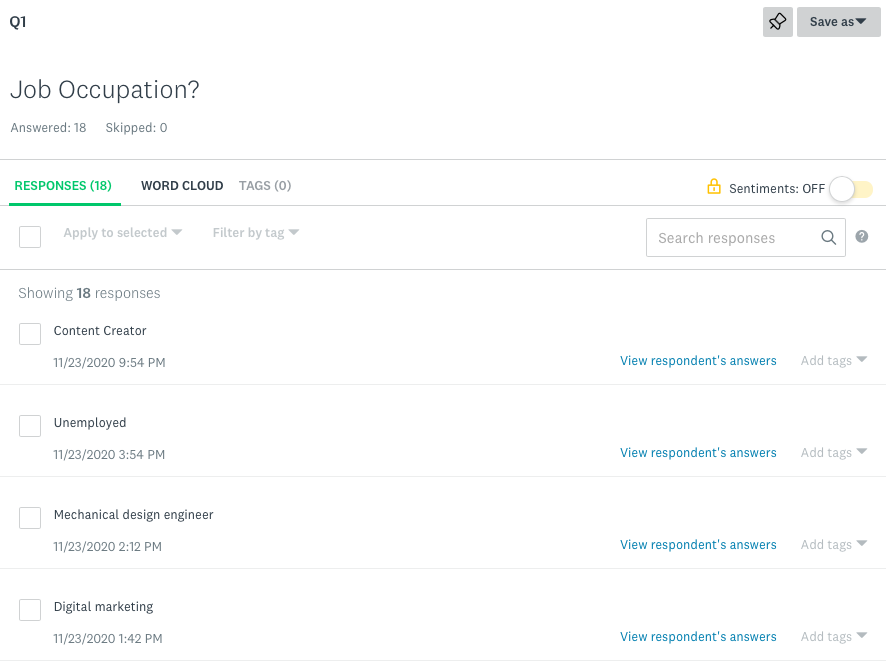


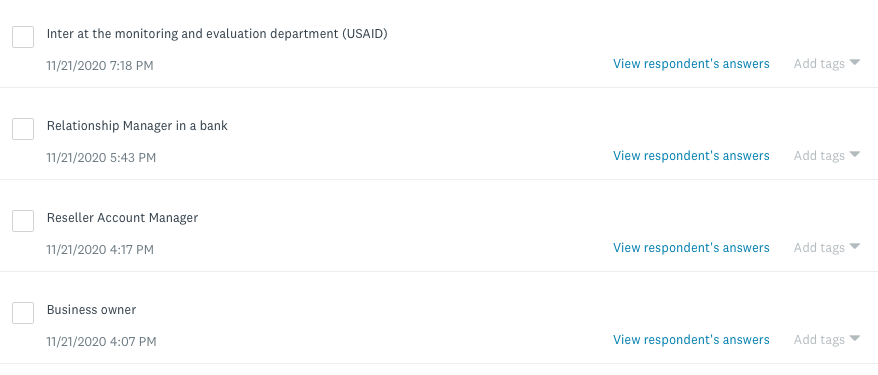

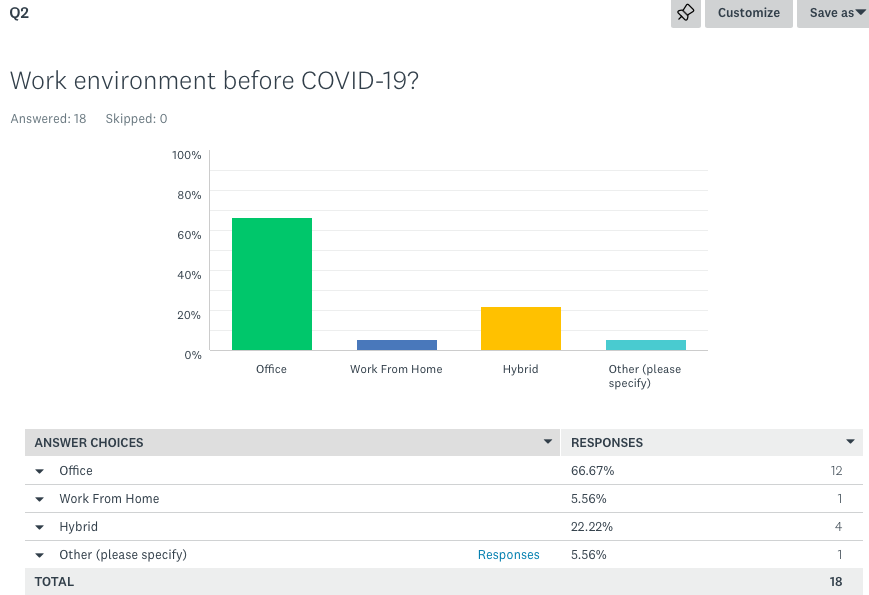
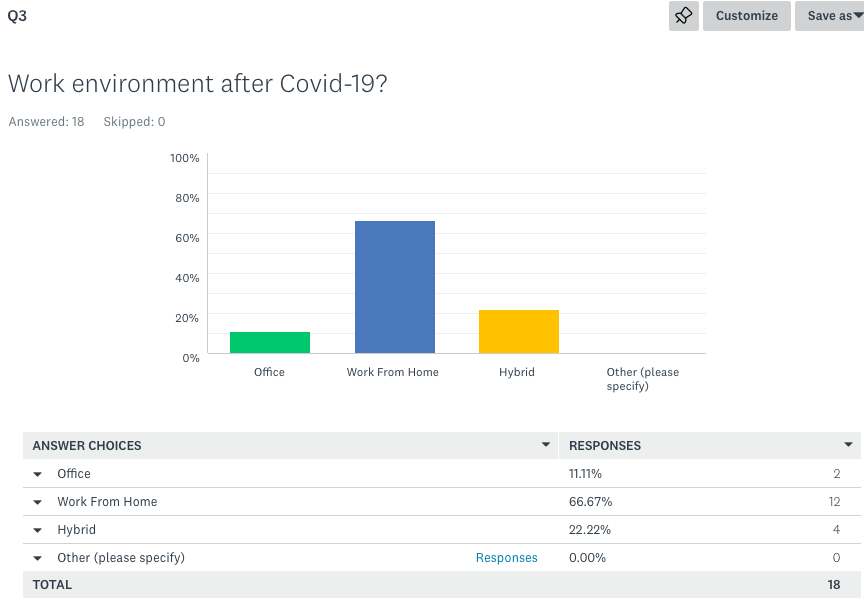
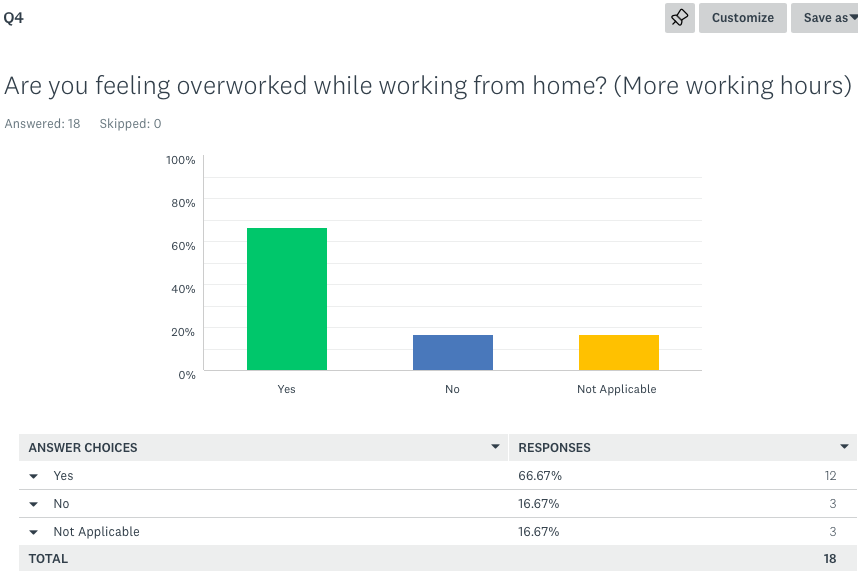
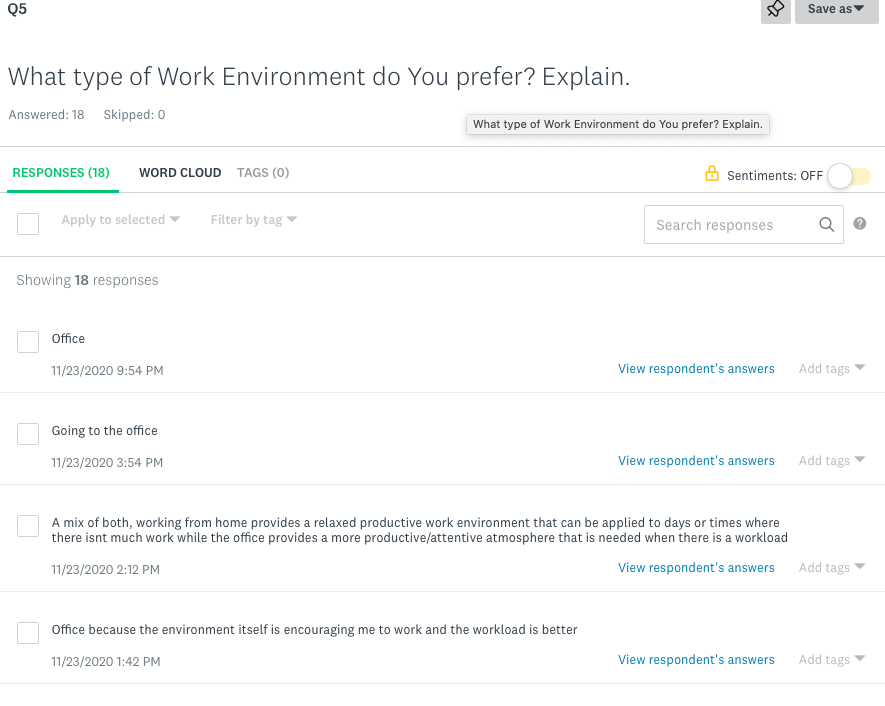
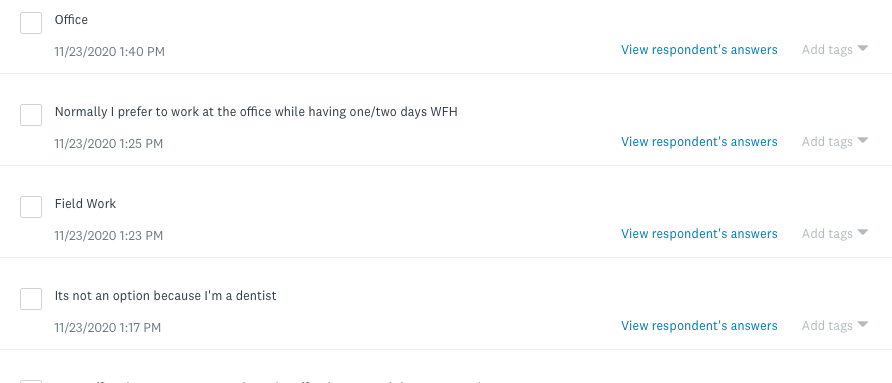
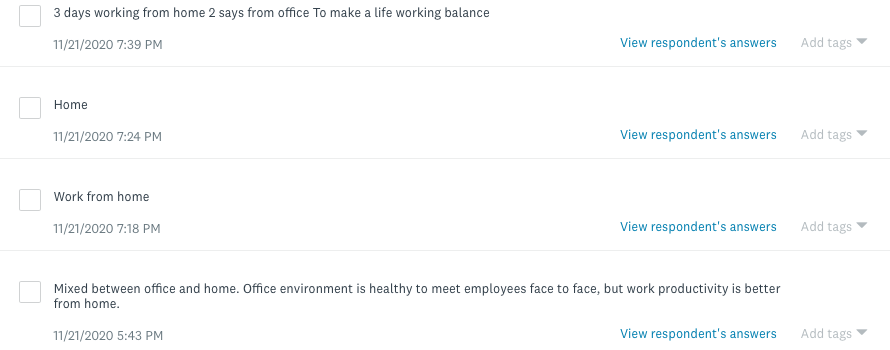


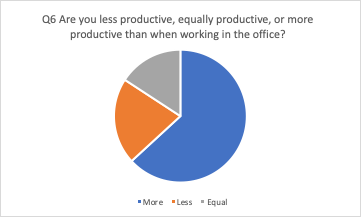
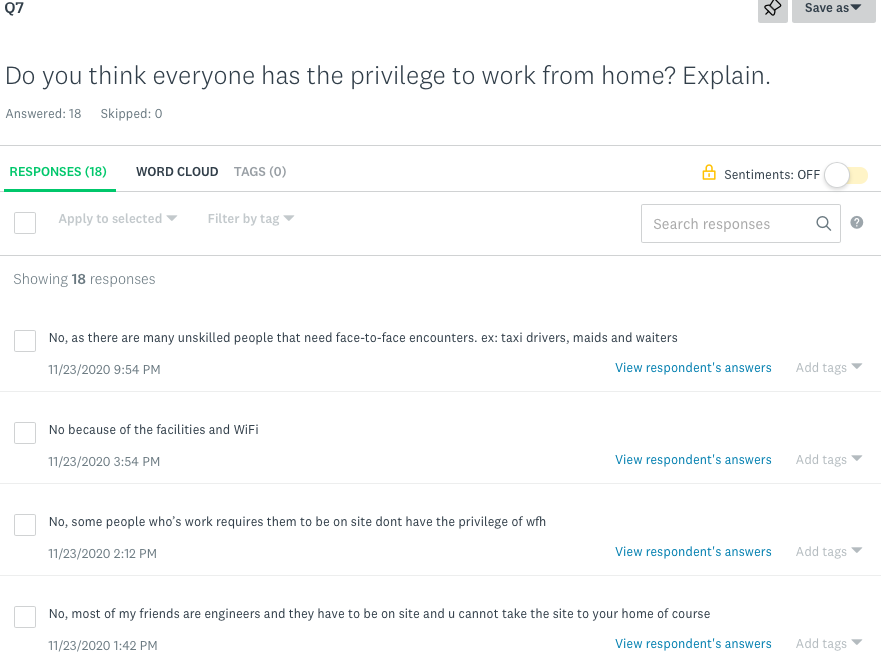
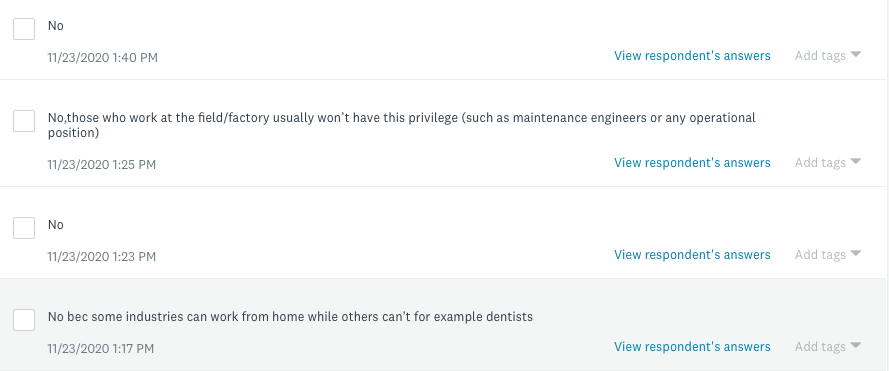


Survey Analysis (Ah, Na)
The survey participants included people from different professions who have been affected by the COVID-19. These professions included business owners, bankers, students, relationship managers, dentists, medical delegates, accountants, engineers, digital marketers, etc. More than 60% of the participants reported that before COVID-19, they used to go to physical offices, which have now been converted as work from home due to the pandemic. Less than 5% of the offices used the work from the home model before the pandemic, which has now been raised to almost 70%. Hence, a drastic shift has been seen in the work model due to COVID-19, as reported by most participants.
More than 66% of participants reported that they were comfortable while working from home, while almost 16% reported that they were not comfortable, while another 16.7% responded that this question was not applicable for them. When asked about whether employees preferred to work from home or the office, only 3 said that they preferred to work from home, whereas the majority preferred to follow a hybrid model, and others reported to work from the office. The interesting finding revealed from the survey is that employees themselves feel that they are more productive when working from the office. Similarly, only one employee reported that everyone has the privilege to work from home.
The analysis of the above findings simply reveals that the practice of working from home has not been as successful as it was expected to be. The employees may not have all the facilities such as internet connectivity, efficient computers, or working space while they work from home. Moreover, they also do not get enough chances to collaborate with their peers or seek help from their colleagues if they get stuck somewhere. Based on these facts, it has been found that the majority of the employees preferred to work in the hybrid model. While some felt that they were more productive when working from home, others felt that it was discouraging and made them feel isolated. This demonstrates how WFH can negatively or positively influence productivity, depending on the characteristics, circumstances, and attitudes of the employees. Although a small number of employees also reported that they are more productive when working from home, that may be because of the availability of effective technology equipment and high-speed internet connectivity. Therefore, since the number of participants responding in favor of working from home is very small, their positive perception cannot be generalized for a broader set of populations.
Conclusion (Ah)
Productivity has always been linked to the use of advanced information technology. However, despite the heavy investments of the companies in their information technology infrastructures and flexibility offered to the employees regarding work from home and flexible working hour policies, the companies have failed to obtain the productivity advantage which they expected. This study conducted a literature survey, a real-world case study, and a survey from the participants to identify their perceptions about working from home and its impact on their productivity.
The survey conducted in this study also reveals that the employees in the majority are not satisfied with the work from home practice, and the hybrid model is most preferred among the employees. This is because when employees work from the office, they have higher productivity. After all, they get immediate support from their colleagues and supervisors, and also they do not need to worry about the availability of the internet and computers. The employees preferred either working from the office or in a hybrid fashion so they can maintain a healthy work-life balance. However, it has been found that working from home is the least preferred option as it becomes very hard for the employees to manage their work routine while working from home.
Therefore, managers who thought computers and technology would solve all workplace issues are forced to change tactics and redesign work. This is what David had predicted back in 1990 when he wrote the article on “The Dynamo and the Computer,” a time will come when management will be forced to not depend on computers only. The time is now, and workplaces are changing with people working from home due to Covid-19. In conclusion, it can be stated that managers need to develop efficient workplace strategies to maintain the high productivity of their workers.
Works Cited
Brynjolfsson, Erik, and Andrew McAfee. Race Against the Machine: How the Digital Revolution is Accelerating Innovation, Driving Productivity, and Irreversibly Transforming Employment and the Economy. Digital Frontier Press, 2011. Web.
David, Paul A. “The Dynamo and the Computer: An Historical Perspective on the Modern Productivity Paradox.” The American Economic Review, vol. 80, no. 2, 1990, pp. 355–361. JSTOR, Web.
Dignan, Larry. “Managing Telecommuters in a Pandemic? Here Are 8 Management Tips“. ZDNet, 2020. Web.
Gent, Edd. “What Remote Jobs Tell Us About Inequality“. BBCpage, 2020. Web.
Kniffin et al. “Covid-19 and the Workplace: Implications, Issues, and Insights for Future Research and Action.” The American Psychologist, 2020, pp. 1-42.
Kretchmer, Harry. “COVID-19: Is This What the Office of the Future Will Look Like?” World Economic Forum, 2020. Web.
Meisenzahl, Mary. “7 Tips for Using Zoom, Google Meet, and Other Remote Work Apps As More Companies Mandate Employees Work from Home Amid Coronavirus Outbreak“. Business Insider Africa, 2020. Web.
Myska, Sangita, and Sarah Shebbeare. “The Remote Work Experiment That Upped Productivity 13%“. BBCpage, 2020. Web.
OECD. “Productivity Gains from Teleworking in the Post COVID-19 Era: How Can Public Policies Make It Happen?” OECD, 2020. Web.
Sarker, Sadrul Islam. “Classical And Neoclassical Approaches Of Management: An Overview“. IOSR Journal Of Business And Management, vol 14, no. 6, 2013, pp. 1-5. IOSR Journals. Web.
Thorstensson, Esra. The Influence of Working from Home on Employees’ Productivity. 2020. Karlstad University, MA thesis. Informatik. Web.
World Economic Forum. “Shaping the Future of Technology Governance: Artificial Intelligence and Machine Learning“. Web.
